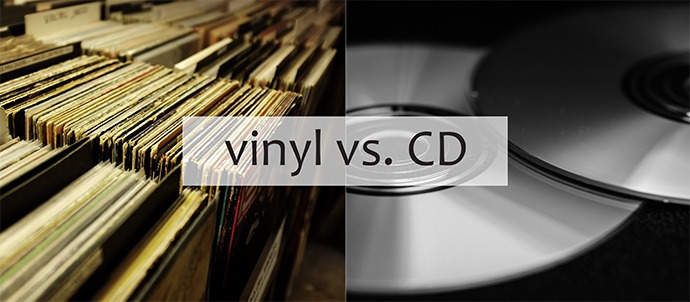Vinyl Records Myths Debunked
There are common misconceptions regarding the vinyl records, and we’re here to reveal you the truth.
So, the purpose of this text is to try to break up some, by the opinion of the author of this text, false myths about vinyl today. Although some of them have a real basis, it may be necessary to observe things from a different perspective in order to see a bigger picture. However, before the start of reading of the text, the author of the text emphasizes that, given the multitude of genres, formats, origin, etc., vinyl albums, in further text “vinyl record” primarily will refer to the long play (LP), and in terms of genre, primarily refers to the rock album, which because of the competence of the mentioned author, as because of the fact that the long play panel defining rock music as a genre, but also contributed to mutual popularity.
The second note is related to the comparison of analog and digital formats, where, despite the fact that such comparisons tend to subjective evaluations, comparisons will refer to a copy of the same “ideal model” album (let’s say The Dark Side of the Moon Pink Floyd, where quality studio recording in terms of production and mastering does not question) and listening experience this issue in different formats, both physical and digital. Finally, when you talk about finances, we should bear in mind the trend, both here in US and in other countries, that the music can be provided from (free) download, through sites such as Youtube, or the pirate sites, so you can get “rips” of the vinyl records and discs without owning any records or discs.
The audio CD format is better than vinyl
This misconception is not accidentally mentioned first in the text, because it is also the most common. Thus, the audio CD is a 16-bit format, which is inferior to the quality of the related formats, such as 24-bit physical formats DVD-Audio or Blu-Ray audio. On the other hand, a vinyl record is an uncompressed format, however, if the content of the vinyl is digitized, its weight would be equivalent to the before-mentioned 24-bit physical and digital formats. In any case, the dissatisfaction with the quality of audio CDs (as well as the mp3 format) can be heard from both camps supporters analog technology, and those who prefer digital audio recording HD resolution. As for the noise, many prefer analog recordings because of that noise that gives a “warm” sound and comfortable listening experience than the “cold” digital recording.
Vinyl is technically obsolete format because of crunching and crackling
Too many people associations for listening to vinyl records is listening to music on the turntable with a mechanical speaker in the shape of a trumpet. Many people also do not know that turntable records can reproduce the sound on the equipment with extremely high quality and strength, without loss of quality, and the physical formats such as CD or mp3 can not beat that. An essential prerequisite for quality playback is a quality vinyl turntable, the most needle quality, and preservation of the record. If the record is without damage and cleaned of dust and dirt, the needle is also new or well-maintained, and a turntable is decent and high-quality, you will have playback quality that will astound you.
As far as technological innovation recently is created a laser turntable, which uses the laser-like CD player to read a record instead of a needle, you are able to listen to vinyl in the best and most modern way. This technology allows the laser “twisting” and switches tracks remotely. The only drawback of this technology is its price, however, with the increase in the demand for vinyl, the price will definitely be more accessible.
Vinyl does not have enough low-frequency response
This is one of the most common arguments against LPs and has some basis in reality. In support of this argument is the fact that not all of the vinyl is the same quality. Quality of a long play record mostly depends on the quality of vinyl and the thickness of the plate, and the best sound quality gets on audiophile vinyl of 180 and 200 grams. An important influence on the quality is the material, however, records made of recycled vinyl can not reach the quality of non-recycled materials. As far as modern vinyl, it experienced a little bit changed production process, so because of a standardized equalization digitalized masters are used, which are specifically designed for vinyl, to achieve the sound that will be as close to the original master tape. So, if the vinyl is too thick (less than 180g in most cases is quite enough), you will not have a problem play, especially on high-quality loudspeakers.
Vinyl is more expensive than CD
This misconception has a real basis, however, it can be seen as a generalization. One reason for this is the fact that recordings of different genres and countries of origin have a different price. In terms of audio collecting perhaps best to say that folk saying “for-money” here has a real application, both in terms of investment in the releases and in terms of equipment on which to this music to be listened to. Depending on the genre and country of origin, the price of physical issues, ranging from budget to inaccessible. Collectibles as a hobby, in any case, is not a cheap hobby, but it is necessary to allocate a significant amount of money for both pleasures.
On the other hand, considering that a large number of vinyl editions (especially rock music) sold out of circulation, that is only available on the stock exchange board and sites for buying and selling, buying vinyl preserved, even unused (the so-called. Mint condition), can you cost less than buying the original audio CD of the same issues. The price of such vinyl determines circulation (the higher the circulation price is usually lower, because the issue of accessible), cover state and condition vinyl (which conserved the price is higher). Therefore, you will save money with the purchase of your desired preserved vinyl edition of that same edition on CD, especially in a large circulation album.
Vinyl has long been forgotten and now returns
Many viewed the recent moves in the music industry, such as the Record Store Day, as a way to vinyl again “return” in the mainstream. Although the return of vinyl in the mainstream is accurate, talking about the number of copies sold vinyl releases in the last few years, vinyl never “went” to now be “back”. In other words, fans of vinyl never ceased to listen and buy the records(the same as, say, a serial novel “Lord of the Rings” or “Game of Thrones” and there was a film version, to the surprise of many). As for the local music, the nineties were too expensive to print vinyl, so the fingers can be counted domestic release on vinyl, while abroad, both at large, as well as with independent labels, largely existed vinyl copies.
What is true is the fact that after a decade-long obsession with digital, and writing off of analog technology, later re-recognize those qualities that have long disputed. The result is seen marriage analog and digital and use the “best of both worlds”, in the manner in which printed new vinyl (storing digital remaster the album on vinyl), in platforms for listening to music, such as Neil Young’s Pono, but also the process of creating music, as documented, for example, Dave Grohlov documentary Sound City. In translation, if it is a “revival”, a that is an analog revival (aka analog-to-digital), but not exclusively vinyl.
Conclusion
Instead of “school” conclusion, this text will be finalized by breaking another prejudice of vinyl and his lovers and concerns fanaticism. Not all fans of vinyl and other albums, collectors, requiring each record in the collection are without a scratch, every piece of the original-not licensed edition, and all modern formats waste of time. While certainly there are some, the message of this paper is “a chance vinyl”, especially trying to clarify some of the concerns that may deter the decision to, at least briefly, “turn the life” on 33 and ½ turns.
Digital recordings are a reality of which can not escape, and certainly, they should not be excluded in the same quantity as the analog formats, such as LPs. Perhaps the best solution is just a nice balance between the analog and digital: if the mp3 and CD are “full meal” which meet daily intake of music, beautify your life “festive meal” in the form of LP of your favorite albums. If you do not deceive the ritual of weighing every millimeter cover, careful handling of placing the record on the turntable and the beauty of the warm sound that makes needle “plowing” through the grooves, then maybe vinyl is not for you.
On the other hand, if you have never heard a sound of a record, enrich your life for one (to you) a new experience: find the artist or song you like and rotate the turntable, either you dig up dusty phonograph of your parents from the attic or went to relatives or record store, where you can get to the turntable. Only in this way, you will be sure, if the music is an essential part of your life, to listen to music in a way that best suits your needs, and only in this way will this text have served its purpose. Today is the right day for it.







